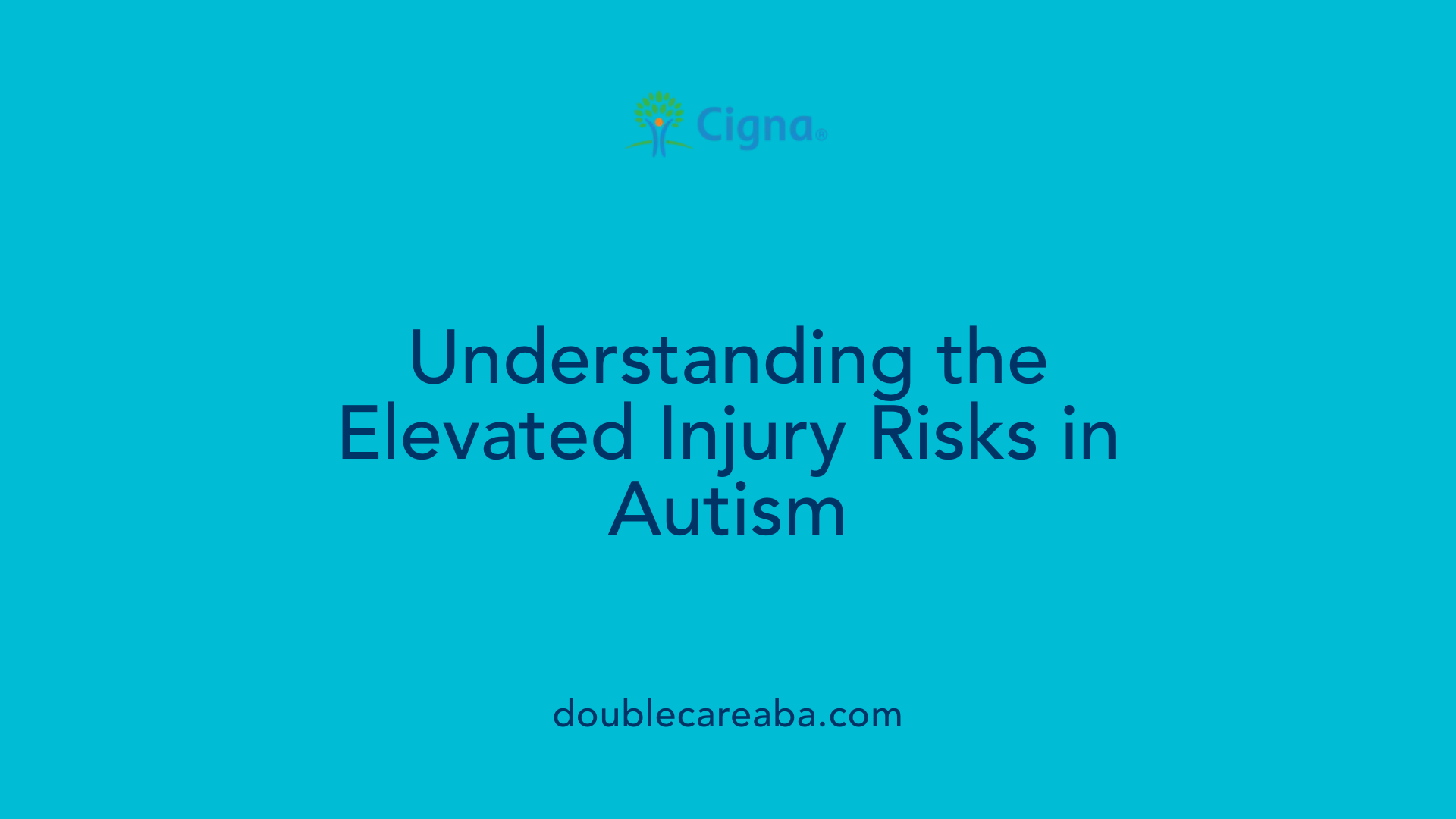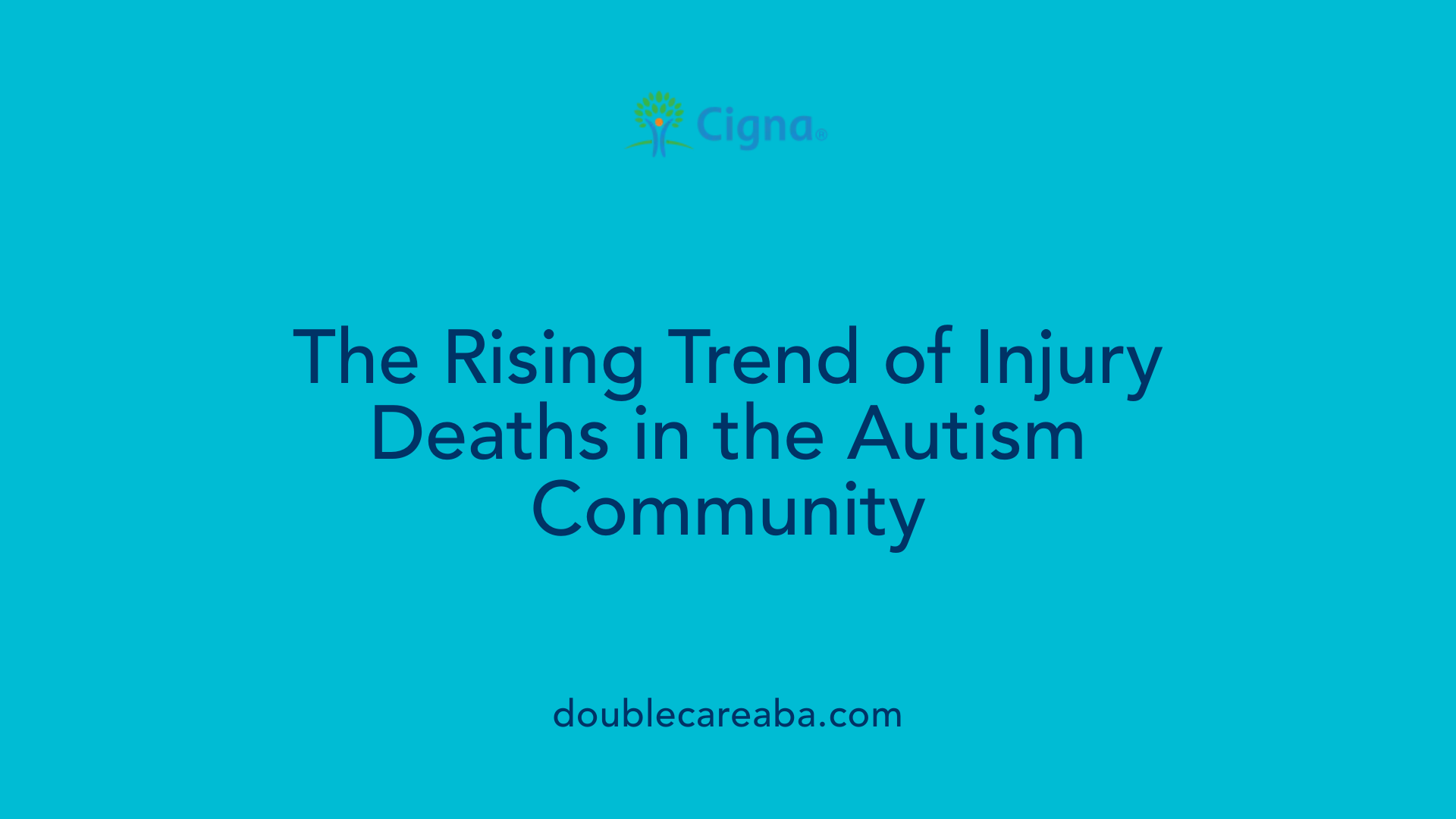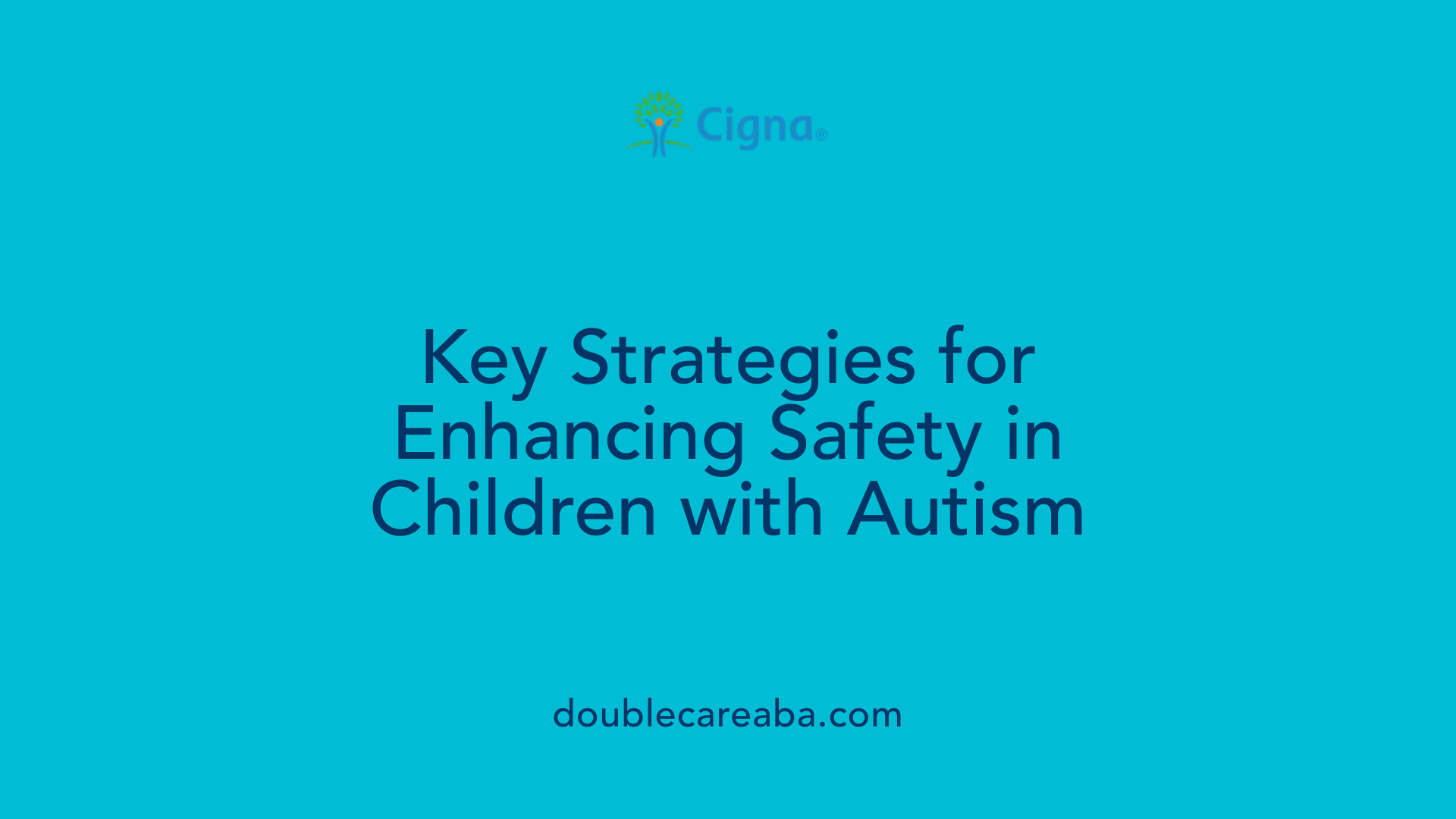Understanding Injury Risks Among Autistic Individuals
Recent data and research studies highlight a concerning trend: individuals with autism face a significantly higher risk of injury and injury-related death compared to the general population. With injuries being a leading cause of early mortality among autistic people, it is crucial to explore the reasons behind this increased risk, examine specific injury data, and discuss safety strategies to mitigate these risks effectively.
Statistical Evidence of Elevated Injury Risks in Autism

Do autistic individuals experience a higher rate of injuries compared to the general population?
Research shows that people with autism are significantly more vulnerable to injuries than those without autism. Statistically, they are about three times more likely to die from injuries and face a 12% higher initial risk of sustaining injuries like falls, burns, drowning, or poisoning.
Autistic behaviors such as wandering, sensory-seeking actions, and difficulty communicating safety concerns greatly increase their injury risk. For instance, wandering increases the chance of traffic accidents and getting lost, while fixation on water bodies raises drowning dangers.
Injury-related mortality rates among individuals with autism
Over the span of 16 years from 1999 to 2014, there was a 700% increase in deaths among people with autism. During this period, 1,367 deaths were recorded in the U.S., with approximately 28% attributed to injuries. These injury-related deaths occurred at an average age of 36 years, much younger than the 72 years of the general population.
Specifically, injury deaths accounted for leading causes such as suffocation, choking, drowning, and asphyxiation. Notably, drowning stands out as the leading cause of death by injury among autistic children, with autistic children being 160 times more likely to die from drowning than their peers.
Comparative injury data between autistic and non-autistic populations
Children with autism have higher injury and emergency department visit rates than their non-autistic counterparts. While children with ASD have similar overall ED visit rates to typically developing children, those with co-occurring conditions like ADHD tend to have higher rates of certain injuries, such as ingestion or inhalation injuries.
Interestingly, children with ASD alone show lower rates of orthopedic injuries and animal bites but have increased risks related to behaviors like self-injury and wandering.
Age-related injury and mortality statistics
Younger children with autism, particularly those aged 0-5, face higher risks of injury and injury-related death. For example, children aged 3-5 have a hazard ratio of approximately 1.28, indicating increased injury risk, especially when they exhibit behaviors like wandering or hyperactivity.
Conversely, adolescents aged 11-20 tend to have a lower injury hazard ratio. Nevertheless, the early childhood years are critical for implementing safety interventions, such as swimming lessons and behavioral management, to prevent fatalities.
Specific injury causes and their prevalence
The leading causes of injury death among people with autism include suffocation, drowning, and asphyxiation, with drowning being particularly prevalent in children. Drowning risk is exaggerated due to behavioral factors such as water fixation and wandering, making prevention efforts like swimming classes crucial.
Additionally, more than 40% of injury-related deaths happen in residential settings, highlighting the importance of home safety measures.
| Injury Type | Relative Risk/PMR | Age Group Most Affected | Preventative Measures |
|---|---|---|---|
| Drowning | 39.89 (PMR) | Children under 15, especially 3-5 years old | Swimming lessons, water safety education |
| Suffocation/Choking | 31.93 (PMR) | All ages, notably young children | Supervised eating, safe sleep practices |
| Asphyxiation | 13.50 (PMR) | All ages, with high-risk in young children | Safe environment modification |
The overall data emphasizes that injury prevention strategies tailored to the needs of children with autism—such as behavioral management, environmental safety, and water safety programs—are essential in reducing the high incidence of injury-related deaths in this vulnerable population.
Analysis of Injury-Related Mortality and Causes in Autistic Populations

What are the common causes of injuries among autistic individuals?
Injuries in individuals with autism often stem from behavioral tendencies, sensory sensitivities, and communication hurdles. Many autistic individuals exhibit sensory processing differences, such as hypersensitivity or hyposensitivity, which can cause them to miss or overlook danger signals in their environment. This increases their susceptibility to accidents like falls, burns, or drowning.
Impulsivity and repetitive behaviors, such as climbing or engaging in self-stimulatory acts, also contribute to higher injury risks. These actions can lead to falls or collisions that result in harm. Moreover, communication difficulties make it challenging for autistic individuals to articulate pain or alert caregivers about injuries promptly, potentially worsening the injury's severity.
Their challenges with interpreting social cues can lead to risky interactions with strangers or animals, which may result in bites, attacks, or other injuries. Sensory-seeking behaviors like spinning, running, or jumping increase collision or fall risks. Additionally, a fixation on water or water-related activities significantly raises the risk of drowning, especially if supervision is inadequate.
Overall, the combination of behavioral, sensory, and communication issues forms the foundation of increased injury risk in this population, highlighting the importance of tailored safety interventions and preventive measures.
Leading causes of injury death such as suffocation, drowning, and asphyxiation
The primary causes of injury-related deaths among autistic individuals include suffocation, drowning, and asphyxiation. Drowning is particularly alarming, with autistic children being 160 times more likely to die from drowning than their non-autistic peers. This heightened risk is often linked to wandering behaviors and an intense interest in water bodies, such as ponds or pools.
Suffocation and asphyxiation also contribute significantly to the injury mortality rate, with events often occurring at home or in residential environments. Motor coordination challenges, combined with behaviors like putting objects in the mouth or obstructing airways, factor into these incidents.
The most common causes are summarized in the table below:
| Cause of Injury Death | Proportion of Total Injury Deaths | Risk Relative to General Population |
|---|---|---|
| Drowning | Highest observed (PMR=39.89) | 160 times more likely |
| Suffocation | PMR=31.93 | Significantly higher |
| Asphyxiation | PMR=13.50 | Elevated risk |
Addressing these specific dangers with safety programs, such as swimming lessons immediately following a diagnosis, and implementing protective measures at home could considerably reduce these risks.
Age at death and how injury contributes to mortality
Individuals with autism tend to die at a much younger age than the general population. The average age at death for autistic individuals is 36 years, compared to 72 years for others. Among the injury-related deaths, the average age drops further to 29 years, highlighting that injuries are a leading cause of early mortality.
Children under 15 are particularly vulnerable, with injury death rates 42 times higher than in neurotypical children. The risk is highest in younger age groups, especially among children aged 0-2 and 3-5 years, who exhibit hazard ratios of 1.141 and 1.282 respectively. As children age, the hazard ratio declines, with adolescents aged 11-20 showing a lower ratio of 0.634, possibly due to increased safety awareness or supervised environments.
This data underscores the critical need for early intervention and ongoing safety measures to protect younger children with autism.
Settings where injuries occur most frequently
Most injuries leading to death among individuals with autism occur at home or in residential settings, accounting for over 40% of such incidents. These environments often lack the specialized safety features necessary to prevent accidents like drowning, suffocation, or falls.
Homes often contain potential hazards such as water sources, unsecured furniture, or small objects that pose choking risks. Since many autistic behaviors include wandering or elopement, supervision becomes paramount, especially in environments with water bodies or busy streets.
Public spaces and outdoor areas also present dangers. Motor coordination issues and impulsivity increase the likelihood of falls or traffic injuries when children venture outside supervised settings.
Safety interventions—like installing water barriers, using GPS trackers, and providing motor skills training—are vital in reducing injury risks. Focused preventive efforts during early childhood and in homes can notably mitigate the high rate of injury-related fatalities.
| Age Group | Injury Risk Level | Typical Settings | Causes Commonly Seen |
|---|---|---|---|
| 0-2 years | High (Hazard ratio 1.141) | Home, Residential | Aspiration, falls, drowning |
| 3-5 years | Very high (HR 1.282) | Home, Outdoor | Drowning, falls, choking |
| 11-20 years | Lower risk (HR 0.634) | Community, Outdoors | Traffic, falls |
This table summarizes the age-specific risks, settings, and causes of injuries among children with autism, highlighting points for targeted prevention strategies.
Children with Autism and the Increased Risk of Injury

What injury risk statistics are available for children with autism?
Children with autism are at a notably higher risk of injury and related death compared to their non-autistic peers. Studies show that autistic individuals are three times more likely to die from injuries, with an average age at death of 36 years, which is significantly younger than the 72 years for the general population. Among these injury-related deaths, suffocation, drowning, and asphyxiation are the leading causes.
Specifically, children with autism are about 160 times more likely to die from drowning than other children. The data from 1999 to 2014 recorded 1,367 deaths among autistic individuals, with nearly 28% attributed to injuries. These figures highlight the urgent need for targeted safety measures.
How do age groups influence injury risks in children with autism?
Age plays a crucial role in injury risk among young autistic children. Children aged 0 to 2 years have a higher hazard ratio of 1.141, while those aged 3 to 5 years have an even higher risk with a hazard ratio of 1.282. These figures suggest that preschool-aged children with autism are especially vulnerable.
In contrast, teenagers aged 11 to 20 years show a lower hazard ratio of 0.634, indicating a reduced injury risk compared to younger groups. The increased danger in early childhood underscores the importance of supervision, early safety education, and intervention efforts designed specifically for this age group.
What is the impact of co-occurring conditions like ADHD and seizures?
Co-occurring health issues significantly influence injury risk in children with autism. When conditions such as seizures, depression, or sensory processing issues are considered, the hazard ratio drops to 0.889, implying a potential reduction in injury risk. However, children with both autism and ADHD may have higher injury rates, especially related to ingestion and inhalation injuries.
Managing these additional conditions is vital. Proper treatment and tailored safety strategies can mitigate the likelihood of accidents. For example, addressing hyperactivity, impulsivity, and sensory seeking behaviors can reduce falls, collisions, and other injuries.
What behaviors in young children with autism increase injury risk?
Young children with autism often engage in behaviors that heighten their injury risk. Wandering or elopement, spinning, climbing, running, and fixations on water are common behaviors that increase safety concerns.
Sensory-seeking activities such as spinning or climbing can lead to falls or injuries. Fixation on water bodies boosts drowning risk, especially if supervision lapses. Communication difficulties can hinder a child's ability to report dangers or seek help, further compounding safety challenges.
Preventative measures include environmental modifications, visual cues, water safety education, and motor skills training, tailored to each child's needs. Close supervision and proactive safety planning are essential, especially during early childhood, when these behaviors are most prevalent.
| Aspect | Details | Additional Notes |
|---|---|---|
| Injury Death Rate | 3 times higher overall, 42 times higher in children under 15 | |
| Leading Causes | Suffocation, drowning, asphyxiation | Drowning risk is particularly high |
| Average Age at Death | 36 years for all, 29 years for injury deaths | |
| Risk by Age Group | 0-2 years HR=1.141, 3-5 years HR=1.282, 11-20 years HR=0.634 | Younger children are at highest risk |
Effective injury prevention for children with autism involves a combination of environmental safety, behavioral strategies, and professional guidance to address their unique needs and behaviors.
The Growing Trend of Injury-Related Deaths in Autism

What does research say about injury prevalence among autistic individuals?
Research indicates that injury prevalence among individuals with autism varies based on injury type and circumstances. While the overall injury rates in autistic children and adolescents are comparable to those in their non-autistic peers, the severity and outcomes differ significantly.
Autistic individuals face notably higher risks of fatal injuries. Drowning, suffocation, and asphyxiation are the leading causes of injury deaths, with drowning being particularly alarming — autistic children are 160 times more likely to die from drowning than the general pediatric population.
Behavioral traits associated with autism, such as wandering, fixations on water, and sensory-seeking behaviors like spinning and climbing, contribute to this increased risk. Additionally, communication challenges often hinder safety awareness and injury reporting, making preventive measures vital.
Certain injury types, such as ingestion and inhalation, are more common among autistic children, especially those with co-occurring conditions like ADHD. Conversely, injuries involving bones or animals tend to be less frequent in this group. Overall, injury-related deaths occur at a much younger age in individuals with autism, highlighting the importance of targeted safety strategies.
This elevated risk underscores the need for specialized safety interventions, including water safety education, behavioral support, and physiologically tailored injury prevention programs. Addressing these risks is critical, given that injuries are a leading cause of early mortality in the autistic population.
Concluding Insights and Strategies for Safety Enhancement

Why are targeted injury prevention programs essential for children with autism?
Children with autism face significantly higher risks of injury and death compared to their neurotypical peers. They are three times more likely to die from injuries, with drowning being the leading cause, especially among autistic children, who are 160 times more likely to drown than the general pediatric population. The average age of death for individuals with autism is 36 years, much younger than the 72 years seen in the general population. These alarming statistics highlight the necessity of developing tailored injury prevention strategies.
Targeted programs should address the unique sensory, behavioral, and communication challenges autistic children experience. For example, visual supports, social stories, and safety gates serve as environmental modifications that reduce hazards at home and in community settings. Special focus on preventing wandering, drowning, and suffocation can save lives. Early intervention through swimming lessons, safety education, and structured routines are crucial in reducing injury risks during childhood.
How can collaboration with healthcare providers and families improve safety?
Cooperative efforts involving healthcare professionals, educators, and families are vital in effectively managing injury risks. Healthcare providers can assess each child's specific needs, co-occurring conditions, and behavioral patterns to tailor safety plans. For example, managing conditions like seizures or sensory processing issues can decrease injury likelihood.
Families are often on the front lines of safety enforcement. Training parents and caregivers on safety practices, use of GPS trackers, and behavioral management reduces hazards. Communication barriers in children with autism necessitate proactive education about dangers and recognizing injury signs. Consistent supervision, along with community outreach, ensures that safety measures are understood and implemented.
What innovative safety tools and technologies are available?
Advances in technology provide valuable tools for injury prevention among autistic individuals. GPS trackers and wearable devices can monitor wandering behaviors, especially in outdoor or unknown environments, significantly reducing risks of injury or getting lost.
Smart home systems and safety alarms—such as water sensors in bathrooms and kitchen—alert caregivers to potential dangers. Virtual reality and simulation-based training can teach children safety skills in a controlled environment. Motor skills development programs supported by robotics or virtual tools also help improve coordination and reduce falls.
How can educational campaigns and awareness efforts make a difference?
Public awareness campaigns are crucial in informing communities about autism-related injury risks and prevention strategies. Educational initiatives should emphasize the common hazards faced by children with autism, including wandering, water safety, and impulsivity.
Workshops, media outreach, and school-based programs help caregivers and community members recognize danger signs and respond effectively during emergencies. Collaboration with safety organizations can lead to the dissemination of best practices and the promotion of safety resources. Increasing awareness ultimately fosters safer environments both at home and in public spaces, decreasing injury and death among autistic populations.
| Focus Area | Strategies | Notable Outcomes |
|---|---|---|
| Injury Prevention Programs | Visual supports, safety gates, water safety classes | Reduced drowning and fall incidents |
| Healthcare & Family Collaboration | Personalized safety plans, caregiver training | Lowered injury rates and improved emergency responses |
| Safety Technologies | GPS trackers, alarms, smart sensors | Quicker intervention, decreased wandering risks |
| Public Awareness & Education | Campaigns, community workshops | Increased safety awareness, community involvement |
By implementing comprehensive safety strategies that combine education, technology, and collaborative efforts, society can substantially diminish injury risks for autism and create safer environments for autistic individuals to thrive.
Addressing the Injury Gap in Autism
The increased injury and mortality risks faced by autistic individuals underscore the need for specialized safety measures, early intervention, and continuous education of caregivers and communities. By understanding the unique challenges and behavioral patterns of autistic people, tailored safety strategies can significantly reduce the incidence of injuries and save lives. This comprehensive approach, combining environmental modifications, behavioral interventions, and community awareness, is essential to bridge the injury gap and promote a safer environment for individuals with autism at all stages of life.
References
- Injury Mortality in Individuals With Autism - PMC
- Injuries among children with autism spectrum disorder - PubMed
- Individuals with Autism at Substantially Heightened Risk for Injury ...
- Recently Published Study on Unintentional Injuries in ASD
- Injury Rates Among Children With Autism Spectrum Disorder With or ...
- Increased risk of fatal injury comes with an autism diagnosis | Reuters
- Injury Mortality in Individuals With Autism - PMC
- Injuries in Children with Autism Spectrum Disorder: Study to Explore ...
- Injury Rates Among Children With Autism Spectrum Disorder With or ...
- Individuals with Autism at Substantially Heightened Risk for Injury ...














